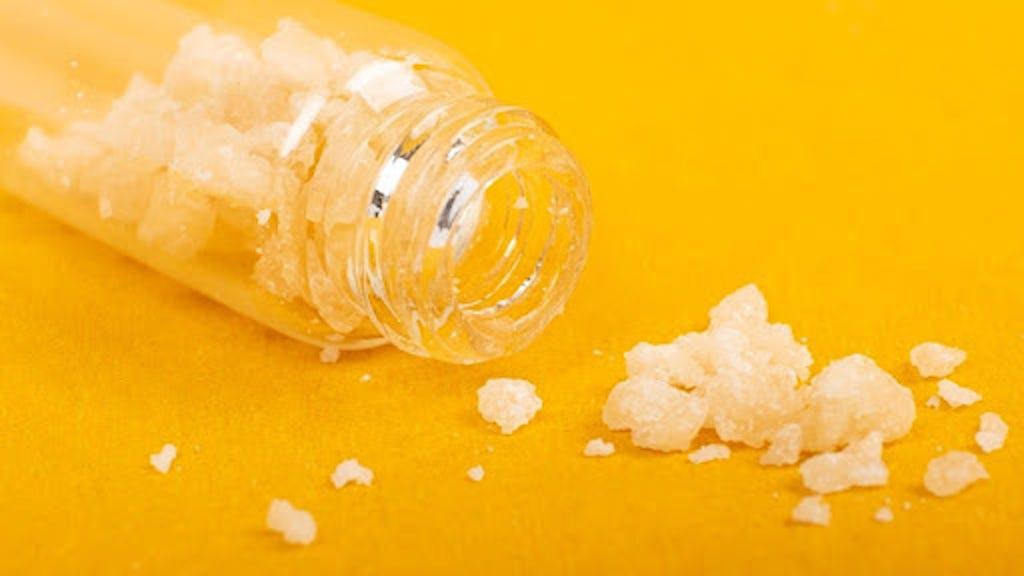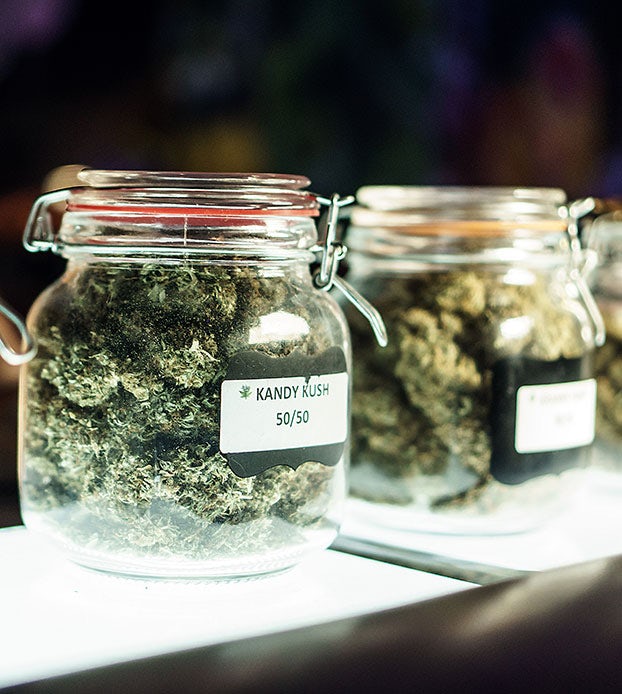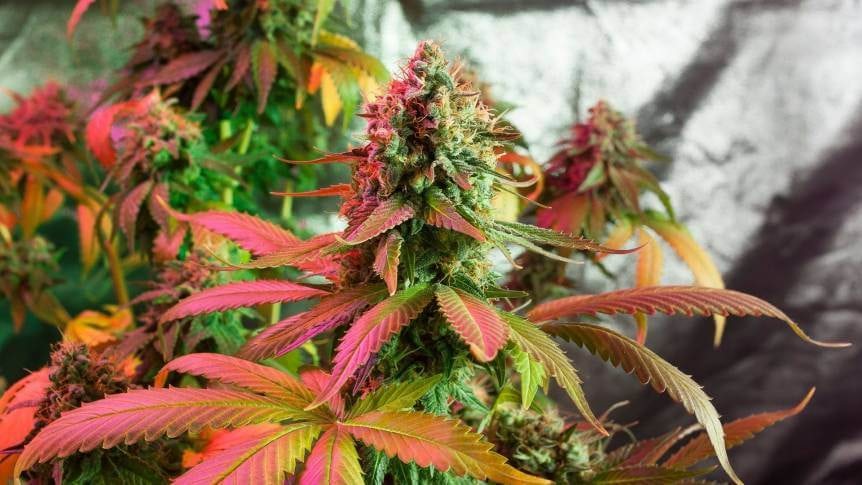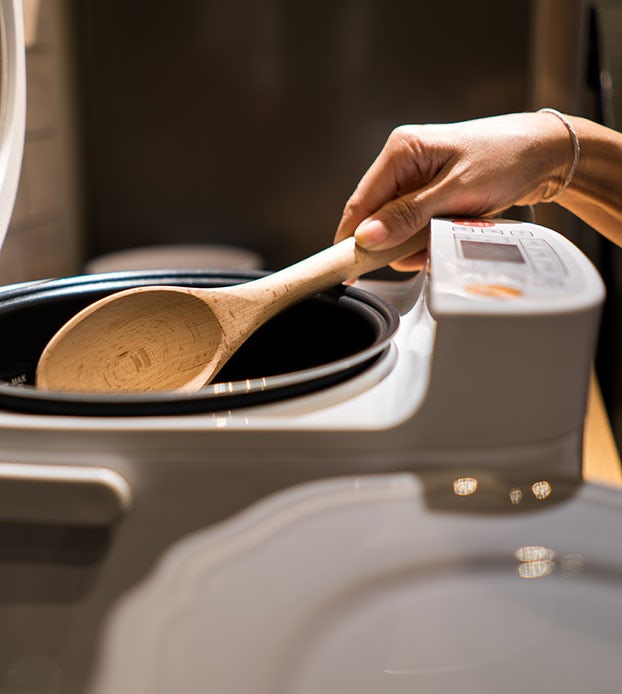Thanks to their unrivaled purity and potency, THCA crystals or “diamonds” are growing in popularity in the cannabis community. This novel cannabis concentrate is the raw form of THC, the main intoxicating compound found in cannabis flower.
While you can find THCA crystals for sale in legal states, you can also make this concentrate at home. Unlike making edibles, homemade extractions can be tricky, and there are pros and cons to the process.
What are THC crystals?
THC crystals are THCA crystalline or THCA isolate.
The name can be slightly misleading because THC crystals are actually THCA, tetrahydrocannabinolic acid, the non-intoxicating precursor or “parent” to THC.
Cannabis plants don’t directly produce THC; they turn the “mother cannabinoid” cannabigerolic acid (CBGa) into THCA. Most cannabinoids, including CBD and THC, begin their life as cannabinoid acids. It takes decarboxylation (the loss of the acid group through heat) to turn THCA into the intoxicating THC we know and love. 1
Pure THCA won’t get you high because it doesn’t have a strong attraction to your body’s cannabinoid receptors. But it may have anti-inflammatory, anti-nausea, and other beneficial properties. 2 3 4
How can you use THC crystals?
Since THCA crystalline is a concentrate, the most popular method of consuming it is with a dab rig. You can also break the crystals down into powder form and mix it with other consumption methods, such as wax, shatter, terp sauce or even into a joint.
But it’s important to remember that once it’s heated, the chemicals undergo decarboxylation and change from THCA to THC.
How to make THC crystals at home

Learning how to make THCA crystals is best left to experienced cannabis extractors. Both solventless and solvent-based methods exist, but only the solventless method should be attempted at home. In reality, the at-home solventless method produces more of an isolate and not the typical crystalline structure of THC diamonds.
For the solventless method, you’ll need a rosin press.
- First, put the cannabis flower inside a rosin filter bag, cover it with parchment paper, and place it into the press, which applies heat and pressure to squeeze the trichomes and create a concentrate called rosin.
- Note: this process is faster if you start with hash or kief due to the higher THCA content of these compared to flower.
- Allow the rosin to cool until it has a wax, budder, or butter-like consistency.
- Place the rosin into a filter bag again, covered with parchment paper, and press to make the terpene-rich oil ooze out and separate.
- You will want to begin with a heat temp around 100 F and build up to about 210 F (99 C), increasing pressure gradually over a couple minutes. Avoid higher temperatures as THCA can begin to decarboxylate more rapidly above 210F (99 C). 5
- Repeat this process multiple times to leave behind a block of white or pale yellow THCA.
Meanwhile, the alternative method of preparing THCA is the solvent-based method, which requires mixing cannabis extract with solvents like acetic acid, pentane, or hexane. Then, chromatography and a rotary evaporator are used to separate all unwanted compounds until only highly purified THCA is left behind.
Another related term, “diamond mining,” refers to the process of crystallizing THCA from a cannabinoid and terpene-rich oil, or sauce. If done properly, some of the THCA present will crystallize and drop out of the solution. The cannabinoid and terpene-rich oil can be poured off, separating the THCA crystals. This process is typically done with hydrocarbon extract and relies on light heat and pressure to facilitate crystallization.
Should you make your own crystalline THCA?
There are both pros and cons to making your own THC crystals.
Pros
- You get a refined cannabis concentrate that can be used in the wide variety of ways discussed above.
- THCA crystalline is an isolated product, meaning as long as you take the same dose you should get a reasonably consistent experience.
Cons
- This process requires expensive, special equipment and knowledge of cannabis extraction methods. It is also time and labor-intensive.
- You’re removing all the terpenes, which not only contribute to the beneficial “entourage effect” of cannabis but also the flavor.
- THCA crystalline is incredibly potent, so while it can be handy and kick things up a notch, it’s easier to overshoot the sweet spot and you could end up more stoned than intended.
In fact, some cannabis users dislike the intense and powerful psychoactive effects delivered by vaping or smoking THCA crystalline, as it lacks the flavor and more well-rounded effects often reported from full-spectrum extracts with multiple terpenes and cannabinoids.
That’s why dabbing THC crystals is more common among experienced cannabis users looking for something new.
Are THCA crystals the same as diamonds?
Yes. THCA diamonds and “sauce” are both names for THC weed crystals. This term is typically reserved for THCA crystals that form in a “sauce”, a concentrate that combines cannabinoids and terpene-rich oils. As the name suggests, sauce is thick, syrupy, and flavorful.
THC crystals on weed: not the same thing
THC crystals are not the same thing as trichomes, though some people use the two terms interchangeably. Trichomes are tiny, hair-like, resin-producing structures that cover the female cannabis flowers and some sugar leaves. Many of these trichomes have resin-filled heads that contain the bulk of the active cannabinoids and terpenes. When you hear someone talking about THC crystals on bud, what they’re really referring to are trichomes. 6
While trichomes do contain THCA and other cannabinoid acids, they also contain terpenoids and other waxes and resins. The THCA found within the trichome is not the not the same thing as THCA crystalline, which is a concentrated, purified, isolate product.
Sources
- Tahir, M. N., Shahbazi, F., Rondeau-Gagné, S., & Trant, J. F. (2021). The biosynthesis of the cannabinoids. Journal of cannabis research, 3(1), 7. https://doi.org/10.1186/s42238-021-00062-4
- McPartland, J. M., MacDonald, C., Young, M., Grant, P. S., Furkert, D. P., & Glass, M. (2017). Affinity and Efficacy Studies of Tetrahydrocannabinolic Acid A at Cannabinoid Receptor Types One and Two. Cannabis and cannabinoid research, 2(1), 87–95. https://doi.org/10.1089/can.2016.0032
- Palomares B, Garrido-Rodriguez M, Gonzalo-Consuegra C, et al. Δ9 -Tetrahydrocannabinolic acid alleviates collagen-induced arthritis: Role of PPARγ and CB1 receptors. Br J Pharmacol. 2020;177(17):4034-4054. doi:10.1111/bph.15155
- Rock EM, Kopstick RL, Limebeer CL, Parker LA. Tetrahydrocannabinolic acid reduces nausea-induced conditioned gaping in rats and vomiting in Suncus murinus. Br J Pharmacol. 2013;170(3):641-648. doi:10.1111/bph.12316
- Wang M, Wang YH, Avula B, et al. Decarboxylation Study of Acidic Cannabinoids: A Novel Approach Using Ultra-High-Performance Supercritical Fluid Chromatography/Photodiode Array-Mass Spectrometry. Cannabis Cannabinoid Res. 2016;1(1):262-271. Published 2016 Dec 1. doi:10.1089/can.2016.0020
- Happyana N, Agnolet S, Muntendam R, Van Dam A, Schneider B, Kayser O. Analysis of cannabinoids in laser-microdissected trichomes of medicinal Cannabis sativa using LCMS and cryogenic NMR. Phytochemistry. 2013;87:51-59. doi:10.1016/j.phytochem.2012.11.001
Sign up for bi-weekly updates, packed full of cannabis education, recipes, and tips. Your inbox will love it.

 Shop
Shop Support
Support















